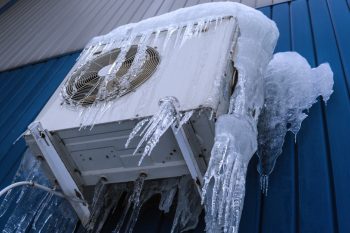
Installing multiple ceiling fans in the same room can be a great way to improve air circulation and cooling efficiency. However, it’s crucial to consider the spacing between the fans to ensure optimal performance and safety. In this in-depth guide, we’ll explore how close ceiling fans can be to each other, the factors that influence this distance, common mistakes to avoid, and more.
The exact distance between ceiling fans can vary based on factors like room size and fan size. However, a general rule of thumb is to position each fan’s junction box about 1/4 of the room’s width from the shorter wall. Also, ensure there’s at least 18 inches of clearance from walls and a minimum of 50cm of space from the tip of any blade to any wall. Safety and airflow efficiency should be top considerations when determining fan placement.
The Ideal Distance Between Ceiling Fans
While there isn’t a specific guideline for the distance between multiple ceiling fans, Hansen Wholesale suggests that each fan’s junction box should be positioned about 1/4 of the room’s width from the shorter wall. For example, in a room that is 17 feet wide (204 inches), the junction box of each fan should be installed 51 inches from the wall. The fans should also be positioned in the middle of the shorter 15-foot wall, which would be 7.5 feet from either side.
How Room Size Affects Fan Placement
The size of the room plays a significant role in determining the appropriate spacing between ceiling fans. Larger spaces, particularly those with high ceilings, might require multiple fans to effectively circulate air. In such cases, fans should be positioned equidistantly in the room, ensuring at least 18 inches of clearance from walls.
For optimal performance, hang fans about 8 feet above the floor. If the room has a high ceiling, purchase a downrod of the appropriate length by subtracting 8 feet from the ceiling height and adding back about 1 foot to accommodate the motor.
Safety Considerations for Multiple Fan Installations
When installing multiple ceiling fans, safety should always be a top priority. Here are some key considerations:
- Ensure proper distance between the fans to prevent airflow interference.
- Choose fan-rated electrical boxes capable of supporting the fans’ weight.
- Maintain a minimum clearance of 7 feet from the floor to the fan blades.
- Keep fans at least 18 inches away from walls and doors.
- Use appropriate parts and follow the manufacturer’s instructions.
- Regularly maintain your ceiling fans to ensure optimal performance and safety.
The Impact of Fan Blade Size and Style
The size and style of fan blades can affect the spacing between ceiling fans. Larger blades or fans with more blades can create a steadier airflow and cool a room faster. However, they also require more space for safe and efficient operation. When installing two fans, ensure there’s at least 50cm of space from the tip of any blade to any wall.
Adjusting Fan Blade Direction
When two fans are installed close to each other, adjust their direction to ensure proper airflow. One fan should act as an intake, bringing fresh air into the space, while the other acts as an exhaust, expelling hot air. To achieve this, mount the fans so their blades are facing opposite directions.
Common Mistakes to Avoid When Installing Multiple Fans
When installing multiple fans, avoid these common mistakes:
- Ignoring proper wiring methods
- Selecting the wrong fan size
- Not considering down-rod size
- Failing to turn off the electricity during installation
- Neglecting regular maintenance
In conclusion, while installing multiple ceiling fans can be a great way to improve air circulation, it’s important to consider factors like room size, fan size, and safety precautions. By taking the time to plan and install your fans correctly, you can enjoy a cooler, more comfortable space.
Frequently Asked Questions
How do I determine the right size of ceiling fan for my room?
The size of your ceiling fan should be based on the size of your room. For rooms up to 75 square feet, choose a fan with a blade span of 29 to 36 inches. Rooms between 76 and 144 square feet should have fans with a blade span of 36 to 42 inches. For rooms between 144 and 225 square feet, choose fans with a blade span of 44 inches. Rooms larger than 225 square feet should have fans with a blade span of 50 to 54 inches.
How often should I maintain my ceiling fan?
It’s recommended to clean and maintain your ceiling fan at least once every season. Regular maintenance includes dusting the fan blades, checking for loose screws, and ensuring the fan is balanced and functioning properly.
Can I install a ceiling fan myself?
While it’s possible to install a ceiling fan yourself, it’s always recommended to hire a professional, especially if you’re unfamiliar with electrical work. Improper installation can lead to safety issues and decreased fan performance.
What is a downrod and why is it important?
A downrod is a metal pipe that connects the ceiling fan to the electrical box in the ceiling. The length of the downrod determines how far the fan is from the ceiling, which can affect airflow and efficiency. It’s especially important in rooms with high ceilings, as it brings the fan down to an optimal height.
What should I do if my ceiling fan wobbles?
If your ceiling fan wobbles, it could be due to the fan being unbalanced, loose screws, or an uneven ceiling. Try tightening the screws first, and if that doesn’t work, you can purchase a balancing kit to even out the weight distribution on the fan blades. If neither of these solutions work, you may need to consult a professional.












